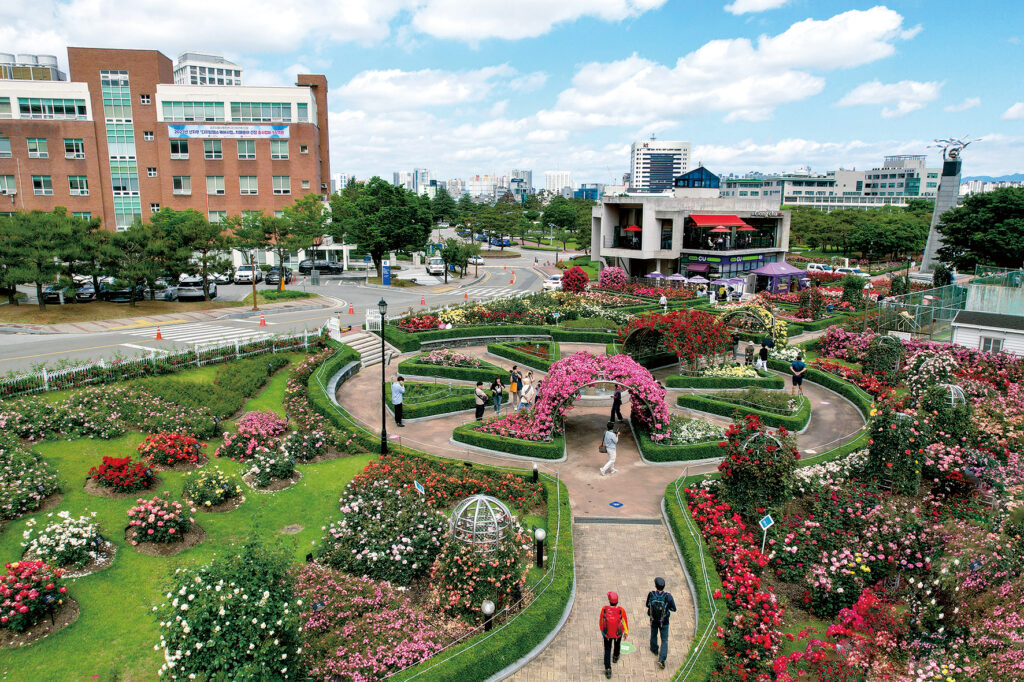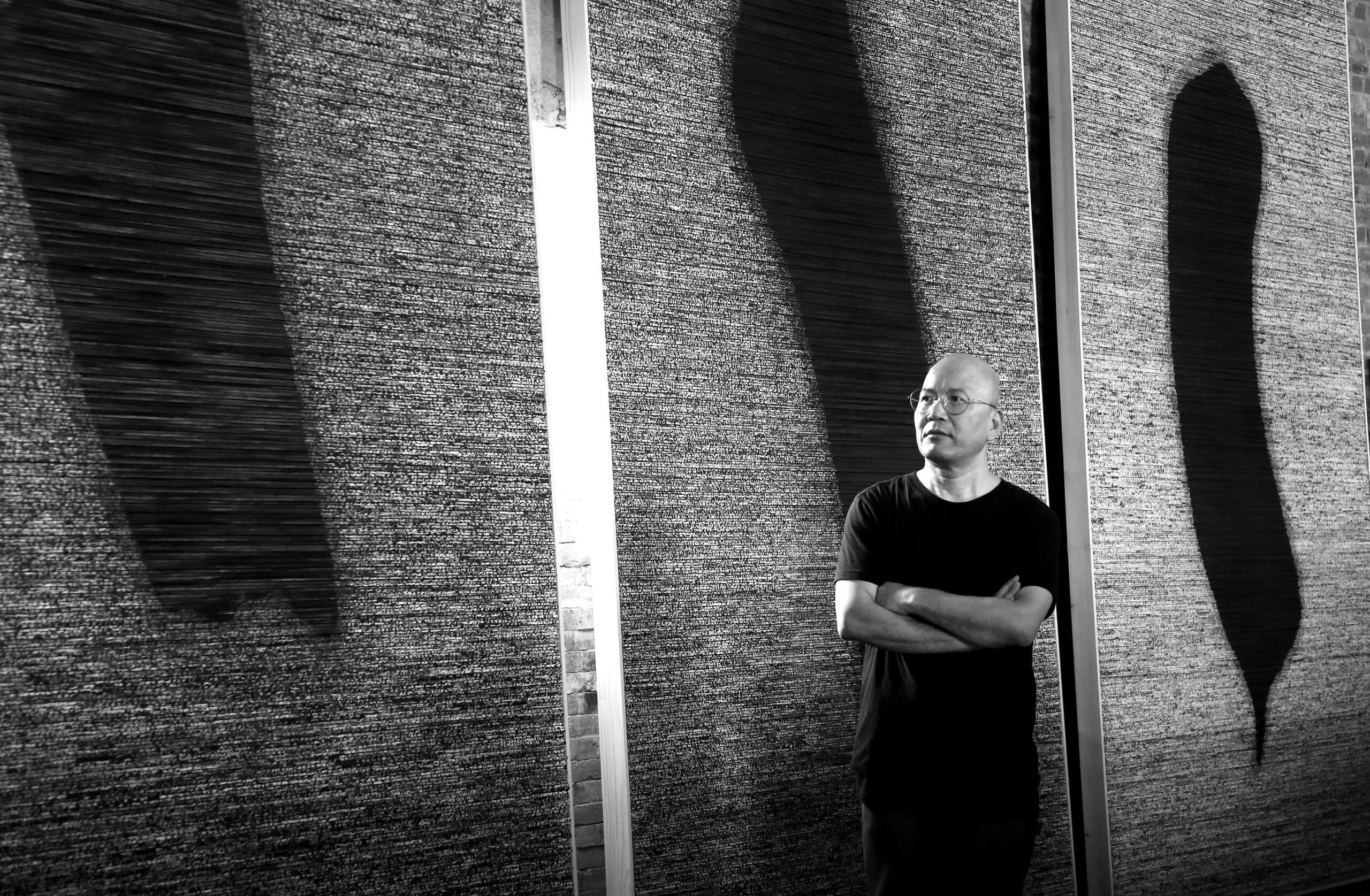Chosun University’s Enchanting Rose Garden
By Anh Nguyen (Anne)

Chosun University’s Rose Garden, nestled in the heart of the university campus, has become a favorite spot among students and visitors. From spring to autumn, the garden showcases a stunning array of roses from around the world, creating a vibrant tapestry of colors. This garden serves as a space where seniors and juniors, the university, and the community come together in love.
Chosun University’s Rose Garden covers a large area of 8,299 square meters. It features a wide variety of roses, with 246 different varieties and a total of 18,216 blooms. The garden is equipped with various facilities to enhance visitors’ experiences, including four pergolas, traditional Korean fences, deck blocks, and lighting installations. These amenities make the garden not only beautiful but also a great place for visitors to relax and enjoy the surroundings.
To provide our readers with a deeper understanding of the university’s beautiful rose garden, we recently had the opportunity to chat with Lee Jung Kuk, a member of the Public Relations Team at Chosun University. That interview follows.
Anne: Thank you for arranging time to do this interview with us. To begin with, can you briefly describe the history of our Chosun University Rose Garden?
Lee Jung Kuk: The Rose Garden was established in May 2001, to the best of my knowledge. After being built over two years, the Rose Garden Festival kicked off its first session in 2003, marking this year as its 20th anniversary. However, due to COVID, we had to skip the festival one year. Additionally, it was canceled in the year the Sewol Ferry sank. Despite these setbacks, we continued with each session, and this year’s festival celebrates the 20th anniversary. The garden was originally initiated by the medical school professors; there used to be a rose garden in front of the medical college. Back then, everyone chipped in, donating funds to create the Rose Garden. Over time, it expanded, and now it serves as a peaceful resting space and a place for visitors to enjoy.
Anne: What makes this rose garden unique compared to others in the Jeolla-do region?
Lee Jung Kuk: When our university first established the Rose Garden, around 72,000 citizens of the city raised funds to set it up. That’s why we initially planted around 72,000 roses. As we’re marking its 20th anniversary this year, you could say the roses have aged a bit, much like people do. They don’t bloom as brightly, wilt faster, and overall, they’re not as strong as they used to be. That’s why this year, we’ve invested around four to five million won to upgrade our equipment, replant some roses, and install new lighting. It’s all about keeping our garden looking its best as it continues to grow and evolve.
Anne: Which types of roses are the most popular among visitors?
Lee Jung Kuk: We have a wide variety of roses in the garden, and I can’t say for sure which ones are the most popular, since we haven’t conducted a specific survey on that. However, there is a unique rose dedicated to honoring the comfort women, also known as the “grandmothers” who had been taken away by the Japanese during the war for forced labor. Additionally, the garden has long pathways lined with individual plots named after donors who contributed to the university. Each plot is named after a donor who helped create and maintain that specific section of the garden.
Anne: What are the main difficulties in maintaining the Rose Garden?
Lee Jung Kuk: Well, roses are quite like people in a way. Roses are surprisingly similar to people in their needs. They require nutrients, occasional pruning of leaves, and when they get too dry, they need watering. All these tasks come with associated costs, which can be a bit challenging to manage. That’s why we’ve set aside some of the donations we received for the Rose Garden. We use that fund to cover these maintenance expenses.
Anne: Are there any upcoming events planned for the Rose Festival that visitors should look forward to this May?
Lee Jung Kuk: From May 16 to 20, we’ll be hosting our main event for five days. The event concludes on Monday, the 20th. After that, we plan to extend the activities from Tuesday to Thursday. We encourage visitors to drop by and enjoy the festivities through Thursday. On Friday, we’ll spend some time wrapping things up. The following week, the student council will hold their festival from Monday through Wednesday, so it all connects seamlessly. With the public holiday on May 18 falling in between, we decided to call it “Rose Week” instead of a festival. While it might not be as catchy as “Rose Festival,” it gives people a sense that they can relax and enjoy various photo zones and numerous events. Plus, we’re planning to showcase some of the university’s achievements and promotions during this period.
Anne: Thank you so much for your precious time. It was amazing to learn so much more about the university’s Rose Garden.
Chosun University’s Rose Garden showcases a variety of roses, from elegant hybrid tea roses like Princess de Monaco to vibrant floribunda roses like Jean de France. Landscape roses such as Pink La Sevillana suit large-scale settings, while antique touch roses like Michelangelo blend classic and modern styles. Petite miniature roses and climbing roses like Magic Carousel and Matsuuri add unique charm and vertical interest, respectively.
The Rose Garden at Chosun University is a captivating blend of beauty and history. Its wide variety of roses, each with its own unique allure, enhances the university’s ambiance and provides a peaceful haven for students, faculty, and visitors. Exploring this enchanting space alongside your loved one offers a delightful way to embrace the beginning of summer.
The Author
Anh Nguyen (Anne) has been living in Gwangju for almost five years now, studying journalism and communication at Chosun University. She fell in love with the city’s beautiful views, rich history, diverse culture, and delicious food. Her goal is to share her love for Gwangju and introduce its stunning natural scenery and attractions to everyone.




